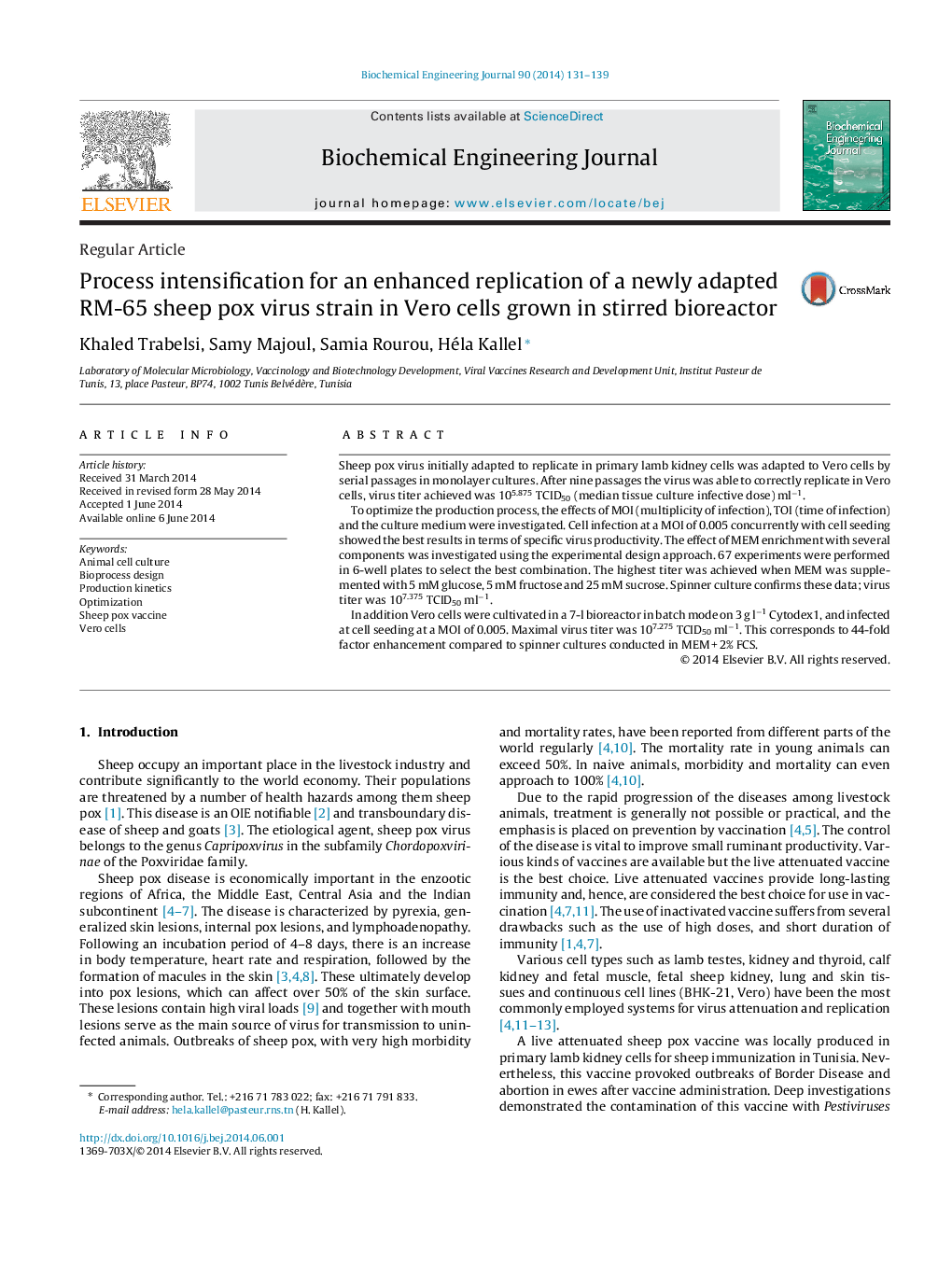| Article ID | Journal | Published Year | Pages | File Type |
|---|---|---|---|---|
| 3001 | Biochemical Engineering Journal | 2014 | 9 Pages |
•Adaptation of RM-65 sheep pox virus to replicate in Vero cells.•Optimal conditions were determined to achieve a high virus titer in Vero cells grown in spinner flask on 3 g l−1 Cytodex 1.•Under optimal conditions virus titer was equal to 107.275 TCID50 ml−1.•Successful scale up of the process from spinner flask to a 7-l bioreactor was achieved.
Sheep pox virus initially adapted to replicate in primary lamb kidney cells was adapted to Vero cells by serial passages in monolayer cultures. After nine passages the virus was able to correctly replicate in Vero cells, virus titer achieved was 105.875 TCID50 (median tissue culture infective dose) ml−1.To optimize the production process, the effects of MOI (multiplicity of infection), TOI (time of infection) and the culture medium were investigated. Cell infection at a MOI of 0.005 concurrently with cell seeding showed the best results in terms of specific virus productivity. The effect of MEM enrichment with several components was investigated using the experimental design approach. 67 experiments were performed in 6-well plates to select the best combination. The highest titer was achieved when MEM was supplemented with 5 mM glucose, 5 mM fructose and 25 mM sucrose. Spinner culture confirms these data; virus titer was 107.375 TCID50 ml−1.In addition Vero cells were cultivated in a 7-l bioreactor in batch mode on 3 g l−1 Cytodex1, and infected at cell seeding at a MOI of 0.005. Maximal virus titer was 107.275 TCID50 ml−1. This corresponds to 44-fold factor enhancement compared to spinner cultures conducted in MEM + 2% FCS.
